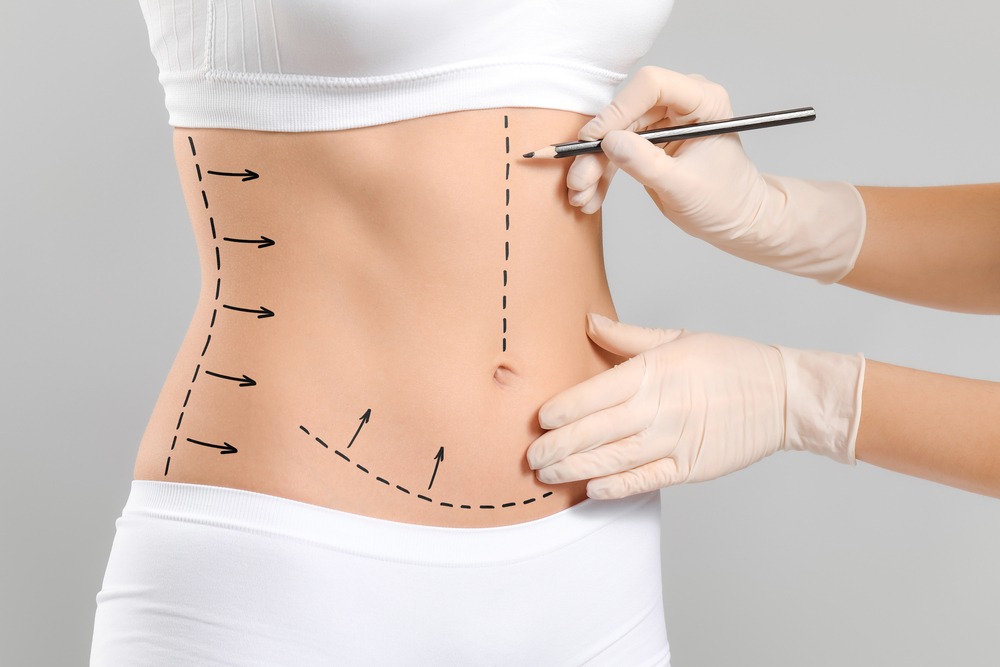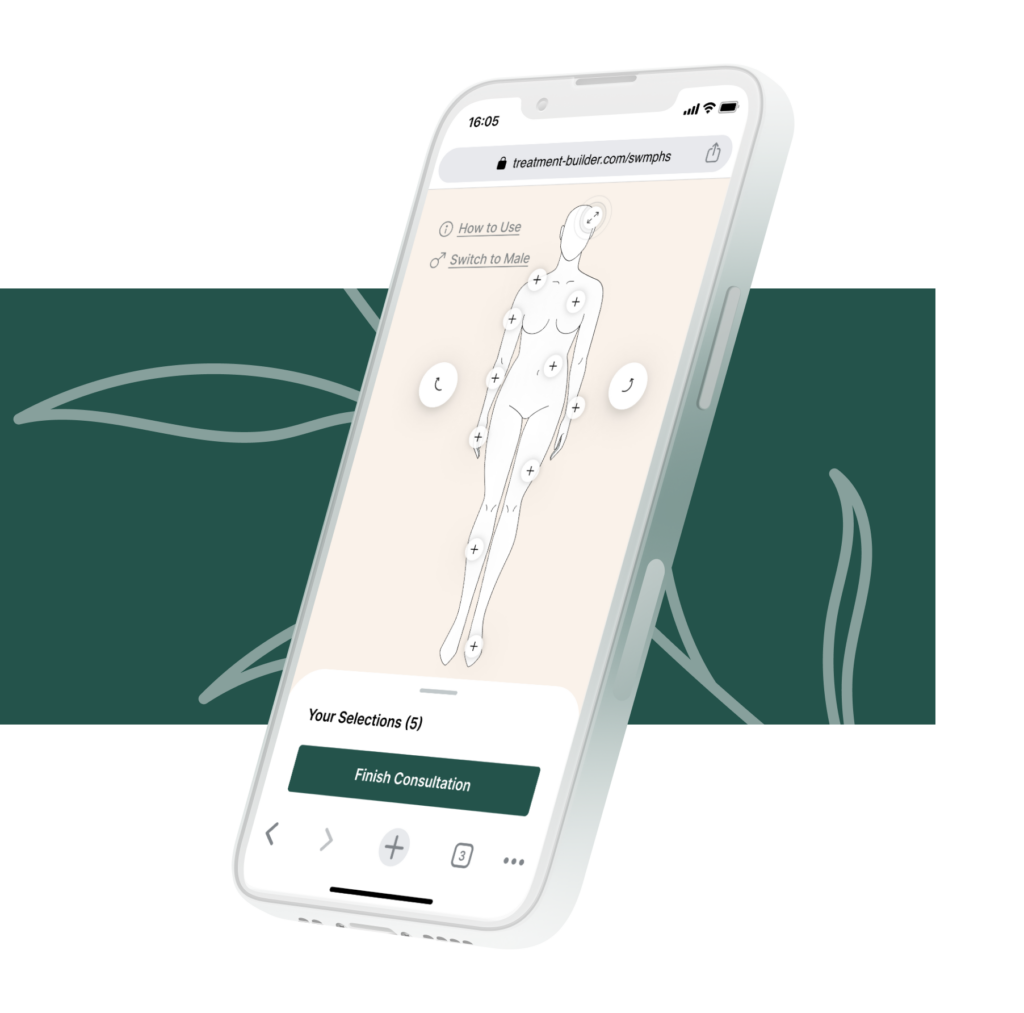
Loose skin, excess fat, and weak muscles in the abdomen are common in both men and women. They can be especially common in women who have had multiple pregnancies and patients who have lost significant amounts of weight. While some treatments and lifestyle changes can help to address excess fat and skin, surgery may be the best option for certain individuals.
A tummy tuck is a surgery that can flatten the stomach, remove excess fat and skin, and improve the strength of the abdominal wall. At Southwest Michigan Plastic and Hand Surgery, we can meet with you to discuss whether our tummy tuck surgeries in Portage, MI, can help you to have a flat and toned stomach.
What Is a Tummy Tuck?
During a tummy tuck, also called an abdominoplasty, your surgeon will remove excess skin from your abdominal area and suture your abdominal muscles together to create a tighter and more contoured midsection. It may be indicated for patients with ab separation or excess fat and skin that don’t respond to diet and exercise or other types of treatments. Abdominoplasty is an outpatient procedure and it can be combined with other surgeries such as a breast lift, breast augmentation, or liposuction.
What Can A Tummy Tuck Address?
Loose Skin
Patients who have had multiple pregnancies or who have undergone massive weight loss may have large amounts of extra skin. In many cases, surgery is the best way to remove this loose skin. During a tummy tuck, the skin on the abdomen is flattened and pulled down and the excess is removed to create a smoother contour.
Excess Fat
Abdominoplasty can help remove excess fat in two ways. As excess skin and tissue is removed from the surgery site, any fatty tissue that is connected will also be removed. If additional excess fat is present that the patient wants to have removed, liposuction can be performed at the same time to remove additional bulges.
Weak Abdominal Muscles
During pregnancy, the additional pressure causes abdominal muscles to stretch and separate. While they can return to normal in many women, others may experience ab separation that persists despite targeted exercises. Muscles can also separate and become weak as a result of weight gain, genetics, and age. A tummy tuck addresses this problem by pulling muscles together and creating a strong abdominal wall.
Some Stretch Marks
While abdominoplasty is not a treatment specifically for stretch marks, stretch marks are often removed with the excess skin. If your stretch marks are present more on the lower portion of your abdomen, it is likely that many or all of them will be removed during your abdominoplasty surgery.
Mini Abdominoplasty vs Full Abdominoplasty: Which Is Right for You?
As the name suggests, a mini abdominoplasty is a less invasive procedure that addresses a smaller area. A smaller incision is made and less tissue is removed. This surgery may be better for patients who have less excess skin, want a shorter recovery, or only want to address concerns on the lower portion of their abdominal area.
A full abdominoplasty may be more suitable for patients with large amounts of excess skin and more severe ab separation. The muscle is repaired from the top to the bottom, the belly button is repositioned, and more skin and fat are removed. You can view our tummy tuck before and after gallery for pictures of real results from our patients.
What to Expect From a Tummy Tuck Procedure
Step 1: Anesthesia
After your surgeon has had a consultation with you and marked the areas where incisions will be made and liposuction will be performed (if applicable), you will be placed under anesthesia. At our practice, we use general anesthesia for tummy tuck procedures.
Step 2: Incisions and Separation of Skin and Muscle
Once you are under anesthesia, the incision will be made. For full abdominoplasty surgeries, this incision will likely be made from hip to hip. Then the skin and other tissues will be separated from the muscles to allow us to repair the muscles.
Step 3: Repairing the Abdominal Muscles
Next, the muscles are repaired and tightened using dissolvable sutures that will hold the muscles firmly in place until they heal into a tightened position. Muscle repair is the portion of the surgery that will give you a flat and toned stomach.
Step 4: Removing Excess Skin and Fat
Once your abdominal wall is repaired, we will pull the skin down in the same way you might pull the blinds down on your windows. Any excess skin and fat that goes beyond the incision line is cut away.
Step 5: Repositioning the Belly Button
If enough excess skin needs to be removed, we will need to make a new hole for your belly button and reposition it on your abdomen. This will require an incision around the belly button. Before closing your incisions, the belly button will be pulled through the new hole and sutured into place.
Step 6: Closing the Incision
Finally, the incision will be closed and drains will be placed to help empty the cavity of fluids during your initial recovery. A compression garment will be placed on the area to keep down the swelling.
Step 7: Recovery From Surgery
You will spend some time in a recovery room after your surgery. Once we are happy with your recovery, a loved one will be able to take you home. As you heal from surgery, you will have several more check-ups at our office to ensure that your recovery is on track.
Consultations for Your Abdominoplasty Surgery
If you want to know if you are a good candidate for tummy tuck surgery, you will need to schedule a consultation. We will perform a medical history and an examination to establish your candidacy for the procedure and make a plan for surgery. At Southwest Michigan Plastic and Hand Surgery, we look forward to hearing from you by phone or online regarding our tummy tuck surgeries in Portage, MI.


